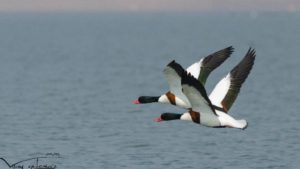Companion@360 → 7 Month programme to sharpen your writing skills → REGISTER NOW

The Pong Dam
The number of migratory birds dying at the Pong Dam wetland in Himachal Pradesh’s Kangra district on the rise for a week, the ICAR-National Institute of High Security Animal Disease has confirmed H5N1 virus as the cause of the fatalities. More than, 2,400 birds of different species have been found dead at Pong Lake over the past week.
The Pong Dam Wetland:
- A reservoir has been constructed on the river Beas in the wet land of Shivalik hills of Kangra district of Himachal Pradesh, which has been named as Maharana Pratap Sagar.
- It is also known as Pong reservoir or Pong Dam.This dam was built in 1975 named in honor of Maharana Pratap, this reservoir or lake is a famous wildlife sanctuary and one of the 25 international wetland sites declared by Ramsar Sammel in India.
- The reservoir stretches to an area of 24,529 hectares (60,610 acres), and part of the lakes is 15,662 hectares (38,700 acres).Pong reservoir is the most important fish reservoir in the foothills of the Himalayas in Himachal Pradesh.
- A water storage reservoir created in 1975 on the Beas River in the low foothills of the Himalaya on the northern edge of the Indo-Gangetic plain.
- The RIS notes that “at a time when wetlands in northern India are getting reduced due to extensive drainage and reclamation, the avian habitats formed by the creation of the Pong Dam assume a great significance” – given the site’s location on the trans-Himalayan flyway, more than 220 bird species have been identified, with 54 species of waterfowl.
- Hydrological values include monsoon-season flood prevention, both in the surroundings and downstream due to water regulation, groundwater recharge, silt trapping and prevention of soil erosion; electricity is generated for this and neighboring states, and irrigation water is being channeled to fertile areas of the Punjab and Rajasthan deserts.
- Low-yield subsistence fishing existed prior to impoundment, but since, a lucrative fishery has grown up, with 27 fish species and a yield increasing markedly each year – some 1800 fishermen now have direct employment and 1000 families benefit indirectly.
- A nature conservation education centre is found on the island of Ransar or Ramsar (sic). Recent management strategies have shifted away from law enforcement and use restrictions towards more participatory approaches and community awareness, and the site is well suited to “community-based ecotourism”. Ramsar site no. 1211. Most recent RIS information: 2002.
Bird flu:
- Bird flu, also called avian influenza, is a viral infection that can infect not only birds, but also humans and other animals. Most forms of the virus are restricted to birds.
- H5N1 is the most common form of bird flu. It’s deadly to birds and can easily affect humans and other animals that come in contact with a carrier.
- According to the World Health Organization Trusted Source, H5N1 was first discovered in humans in 1997 and has killed nearly 60 percent Trusted Source of those infected.
- Currently, the virus isn’t known to spread via human-to-human contact. Still, some experts worry that H5N1 may pose a risk of becoming a pandemic threat to humans.
- Although there are several types of bird flu, H5N1 was the first avian influenza virus to infect humans. The first infection occurred in Hong Kong in 1997. The outbreak was linked to handling infected poultry.
- H5N1 occurs naturally in wild waterfowl, but it can spread easily to domestic poultry. The disease is transmitted to humans through contact with infected bird feces, nasal secretions, or secretions from the mouth or eyes.
- Consuming properly cooked poultry or eggs from infected birds doesn’t transmit the bird flu, but eggs should never be served runny. Meat is considered safe if it has been cooked to an internal temperature of 165ºF (73.9ºC).
Read Also Keoladeo National Park

